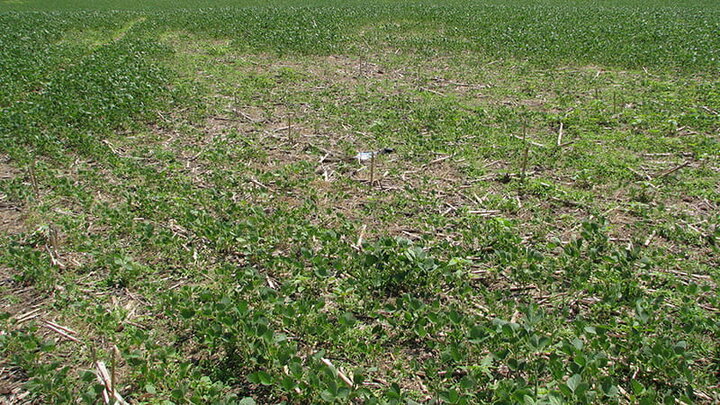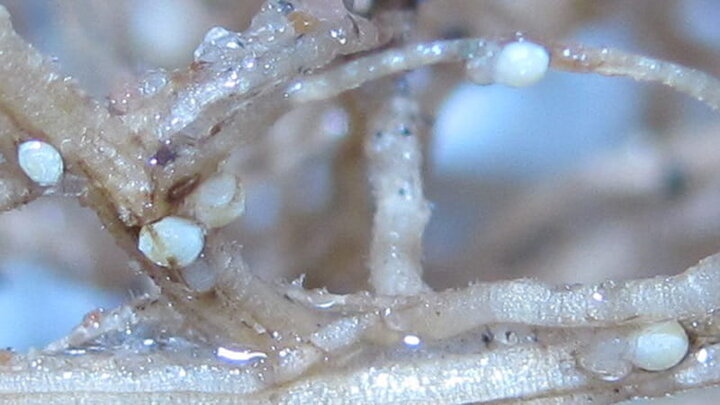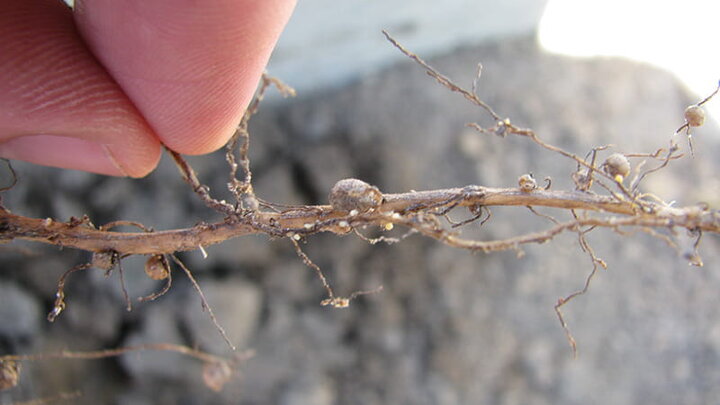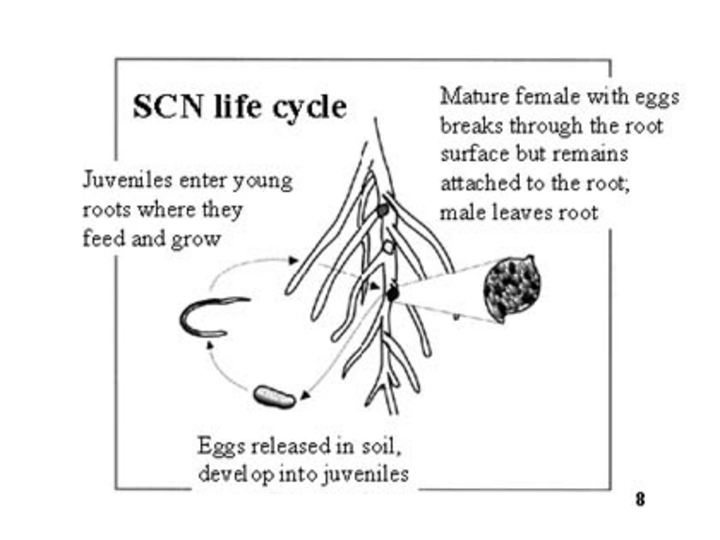Plant Disease: Common Soybean Diseases

Soybean Cyst Nematode (SCN)
Soybean cyst nematode (SCN), Heterodera glycinesis, is the No. 1 disease of soybean throughout the U.S. SCN has been confirmed in 59 counties in eastern and central Nebraska (Figure 1).

Identification of SCN can occur according to field symptoms and/or plant symptoms. For field symptoms, the first indication is below-expectation yields. In many cases throughout Nebraska, there are no visible, aboveground symptoms of infection, yet yields may be reduced five to 10 bu/acre or more. With light to moderate SCN infestation, occasionally a slight variation in height can be observed. As infestation levels become higher symptoms can include stunting, chlorosis and even plant death. Circular- to oval-shaped areas of stunted, yellow plants can be observed (Figure 2). Infested areas can often be elongated in the direction of tillage practices, since cysts are spread by tillage equipment.
On individual plants, symptoms include stunted roots with fewer nitrogen-fixing nodules on the roots. The unique symptom or “sign” of SCN is the presence of the adult females (also known as cysts on the roots (Figure 3) .Adult females appear as lemon-shaped bodies on the roots and are initially cream-colored. As the female matures, she will turn yellow and finally tan to brown in color. Although the cysts are much smaller than nitrogen nodules, they can be seen with the unaided but trained eye (Figure 4).


Observation of adult females on the roots is one way to confirm an SCN infestation in field. In general, the females are evident on roots a month after emergence. However, absence of females (cysts) on the roots doesn’t mean a field is free of SCN. When there are low levels of SCN infestations, it is easy not to visualize the adult female on the root. The best way to determine if SCN is present in a field is with a thorough soil test. Figure 5 shows the disease cycle for SCN.

Soybean Cyst Nematode Management
Sanitation
SCN moves with anything that moves soil, including ATV’s, boots, wildlife, equipment, etc. Thoroughly clean equipment when moving from an infested field to a field where SCN has not been identified.
Resistant Carieties
Planting SCN-resistant soybeans is a very efficient management tool. Check with your local seed representative to discuss which cultivars perform the best in your area.
Rotation
Two types of rotation are needed for successfully management of SCN: (1) rotation between non-host and host crops, and (2) rotation in the source of SCN resistance.
Nematicides
Certain nematicides are labeled for use against SCN, but they are highly toxic and generally not considered economical or effective.
Seed Treatment Nematicides
Some nematicides are currently labeled as a seed treatment for management of SCN.

Nebraska Soybean Board graciously provided the funding for the Soybean Management Guide.
Course authored by:
Amy Timmerman, extension educator; Aaron Nygren, extension educator; Brandy VanDeWalle, extension educator; Loren Giesler, Plant Pathologist Department head; Ron Seymour, extension educator; Keith Glewen, former extension educator; Charles Shapiro, emeritus extension soil scientist; Amit Jhala, extension weed specialist; Don Treptow, former graduate student
